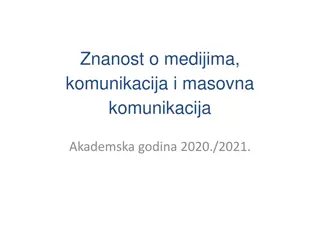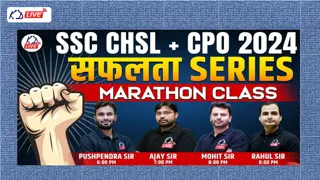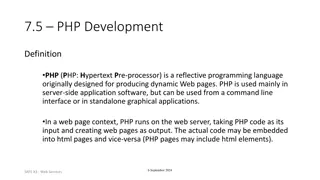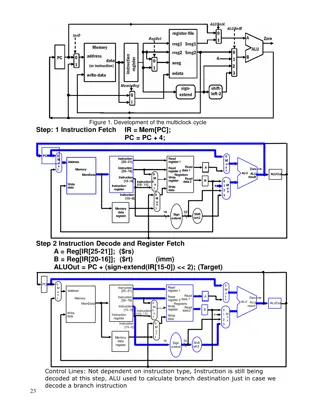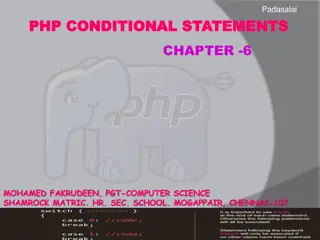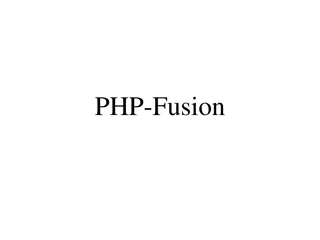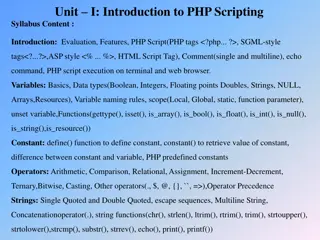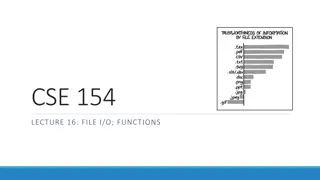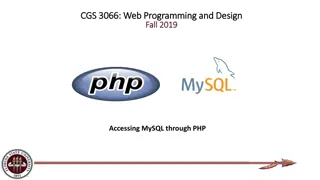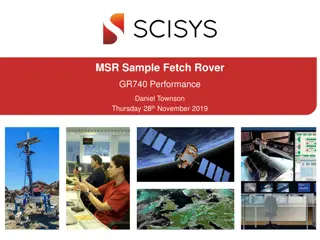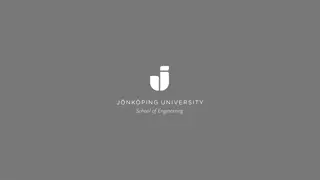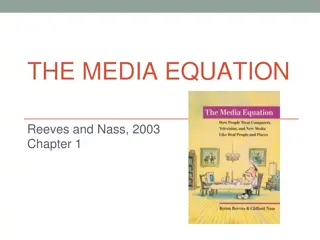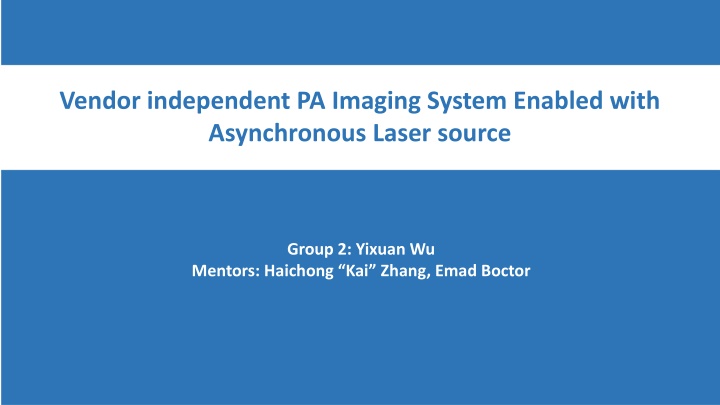
Asynchronous PA Imaging System Enabled with Laser Source
Explore the advancements in vendor-independent photoacoustic imaging systems utilizing asynchronous laser sources, addressing differences between ultrasound and PA systems, challenges in synchronization, technical approaches, and algorithmic solutions for real-time imaging implementation on US platforms.
Download Presentation

Please find below an Image/Link to download the presentation.
The content on the website is provided AS IS for your information and personal use only. It may not be sold, licensed, or shared on other websites without obtaining consent from the author. If you encounter any issues during the download, it is possible that the publisher has removed the file from their server.
You are allowed to download the files provided on this website for personal or commercial use, subject to the condition that they are used lawfully. All files are the property of their respective owners.
The content on the website is provided AS IS for your information and personal use only. It may not be sold, licensed, or shared on other websites without obtaining consent from the author.
E N D
Presentation Transcript
Vendor independent PA Imaging System Enabled with Asynchronous Laser source Group 2: Yixuan Wu Mentors: Haichong Kai Zhang, Emad Boctor
1 Background, Specific Aims, and Significance Photoacoustic Imaging Differences between US and PA systems Time-of-flight of the US wave US scanners don t have frame triggers and laser triggers Advantage Disadvantage Deep penetration High resolution Safety Hardware is expensive and vendor-variant Laser Transmitted ultrasound wave Received ultrasound wave How to implement PA imaging on US platforms Monitor Laser beam Monitor Light absorber ? Ultrasound wave Signal processor Signal processor Photoacoustic Imaging System Ultrasound Imaging System
1 Background, Specific Aims, and Significance Beamforming Delay-sum beamforming1 Time-of-flight (TOF) Difference of time-of-flight (TOF) US Re-beamforming! PA HAICHONG K. ZHANG, MUYINATU A. LEDIJU BELL, etc. ?? ?? ?? Synthetic-aperture based PA re-beamforming (SPARE) Approach ??? =?? ??? =??+?? ? ? 1. Courtesy of http://beamforming-noise-cancellation.weebly.com/beamforming.html
1 Background, Specific Aims, and Significance Two Challenges Synchronization Real-time imaging One frame One beamline Developed and Investigated by Group 13, CIS II, 2016 Phase varies frequency is unknown 1. Phase of the laser pulse is unknown. 2. Frequency of the laser pulse is unknown.
1 Background, Specific Aims, and Significance Aims Algorithm: synchronize laser pulses and ultrasound waves Algorithm: synchronize image frames PA imaging on US platform Use synchronized signals to implement real-time PA imaging.
2 Technical Approach Random-looking signal TV snowflake Asynchronous PA imaging signal on US platform Depth of the object can t be found Laser frequency found Laser phase found Depth found, unfocused Synthetic-aperture based PA re-beamforming (SPARE) approach applied Focused
2 Technical Approach Approaches Workflow Synchronization Algorithm: Idea: Brute-force searching/Optimization problem Procedure: 1. recover beamline trigger; 2. recover frame trigger Validation: 1. ground truth data; 2. add noise Real-time Imaging Set up QT, OpenCV and Visual Studio Use acquired code Integration Matlab simulation Use Phantom on US platform Clinical US data
3 Deliverables 1. Set up the environment (including visual studio, c-Make, QS Creator, Ultrasonix and OpenCV) on laptop for US platform implementation. Achieve real-time PA imaging (Howard s project last year) with US platform. 2. Simulate in Matlab with k-wave tool box: develop a PA synchronization algorithm to recover beamline trigger and frame trigger, get ground truth data without noise first, then add noise. Minimum 1. Incorporate Matlab code in C++ and transplant it onto Ulterius. 2. Utilize the Pseudo PA point target source (PZT element) to verify the algorithm Expected 1. Improve the algorithm to reach higher accuracy and efficiency. 2. Use real high PRF laser to test the system 3. Summary of PA imaging using clinical US scanners in a paper for submission. 4. An in-class demo of PA imaging using clinical US scanners. Maximum
4 Dependencies Software Hardware The Ultrasonix SonixTouch US imaging machine Pseudo PA point target source (PZT element) (Acquired) High PRF laser (Recently Acquired) Matlab k-wave tool box for PA imaging simulation (Acquired) Visual studio 2010 (Acquired, but may reinstall) QT creator (Acquired) CMake (Acquired) OpenCV 2.4.11 (Acquired)
5 Timeline Milestone Name Date Status Milestone Name Date Status 2/15 3/26 Set up Ultrosonix SDK, QT creator, In progress Acquire PA real time re-beamforming Before 2/1 Done CMake and open CV. algorithm + US Imaging SDK. 3/6 4/9 Incorporate Matlab programs into C++ Not started Reading on PA imaging and document Before 2/1 Done Milestone.2 C++ algorithm Completed methods and algorithms. 2/1 2/15 k-wave installation and manual reading Use phantoms to test the In progress Simulate and get ground truth data. 2/10 2/24 In progress synchronization algorithm with clinical 4/9-4/16 Not started Develop brute-force searching US scanner. algorithm to synchronize frames and Validate the synchronization algorithm 2/10 3/5 In progress 4/9 - 4/16 Not started laser pulses. Simulate PA imaging with via clinical US data k-wave tool box in Matlab. Combine synchronization part and 3/6 3/12 4-16 5/1 Validate the algorithm and improve it. Not started real-time part to achieve PA imaging Not started on US platform Add noise to frames and beamlines, 3/12-3/19 Not started validate the algorithm. Milestone.3 Integration of synchronization & real-time imaging 5/1 5/18 Prepare demo and final report/paper Not started Milestone.1 Simulation Completed
5 Simulation completed Timeline 3/19/2017 Combination of synchronization algorithm and real-time imaging 5/1/2017 C++ algorithm incorporated 3/26/2017 2017 2017 Week 1 3 5 7 9 11 13 15 17 Today Backup plan: 1. If delays are encountered in milestone 1, keep focusing on developing the synchronization algorithm. Make incorporation of Matlab program in C++ as a maximum deliverable. 2. Hardware problems may occur on US platform. If delays occur in milestone 3, leave more time to tests and put off integration of synchronization and real-time imaging. Acquire SPARE algorithm + US Imaging SDK 1/23/2017 - 2/1/2017 Reading and documentation 1/23/2017 - 2/1/2017 k-wave installation and manual reading 2/1/2017 - 2/5/2017 Develop/simulate brute-force searching algorithm in Matlab 2/10/2017 - 3/5/2017 Simulate and get ground truth data 2/10/2017 - 2/24/2017 Validate the algorithm and improve it 3/6/2017 - 3/12/2017 Add noise to frames and beamlines, validate in Matlab 3/13/2017 - 3/19/2017 Set up Ultrosonix SDK, QT creator and open CV 2/15/2017 - 3/26/2017 Incorporate Matlab programs into C++ 3/6/2017 - 4/9/2017 Construct phantoms to test the synchronization algorithm on clinical US scanner 4/9/2017 - 4/16/2017 Validate the synchronization algorithm via clinical US data 4/9/2017 - 4/16/2017 Combine synchronization part and real-time part to achieve PA imaging on US platform 4/16/2017 - 5/1/2017 Prepare demo and final report/paper 5/1/2017 - 5/18/2017
6 Management Plan Currently scheduling time with Dr. Boctor to set a standing meeting schedule. Weekly meeting with mentor Kai. Documentation on reading materials, programming diagrams, work status and so on. Regularly check code and project status Backup codes frequently
2.1 Thank you HAV HAV HAV HAV HAV HAV HAV HAV

